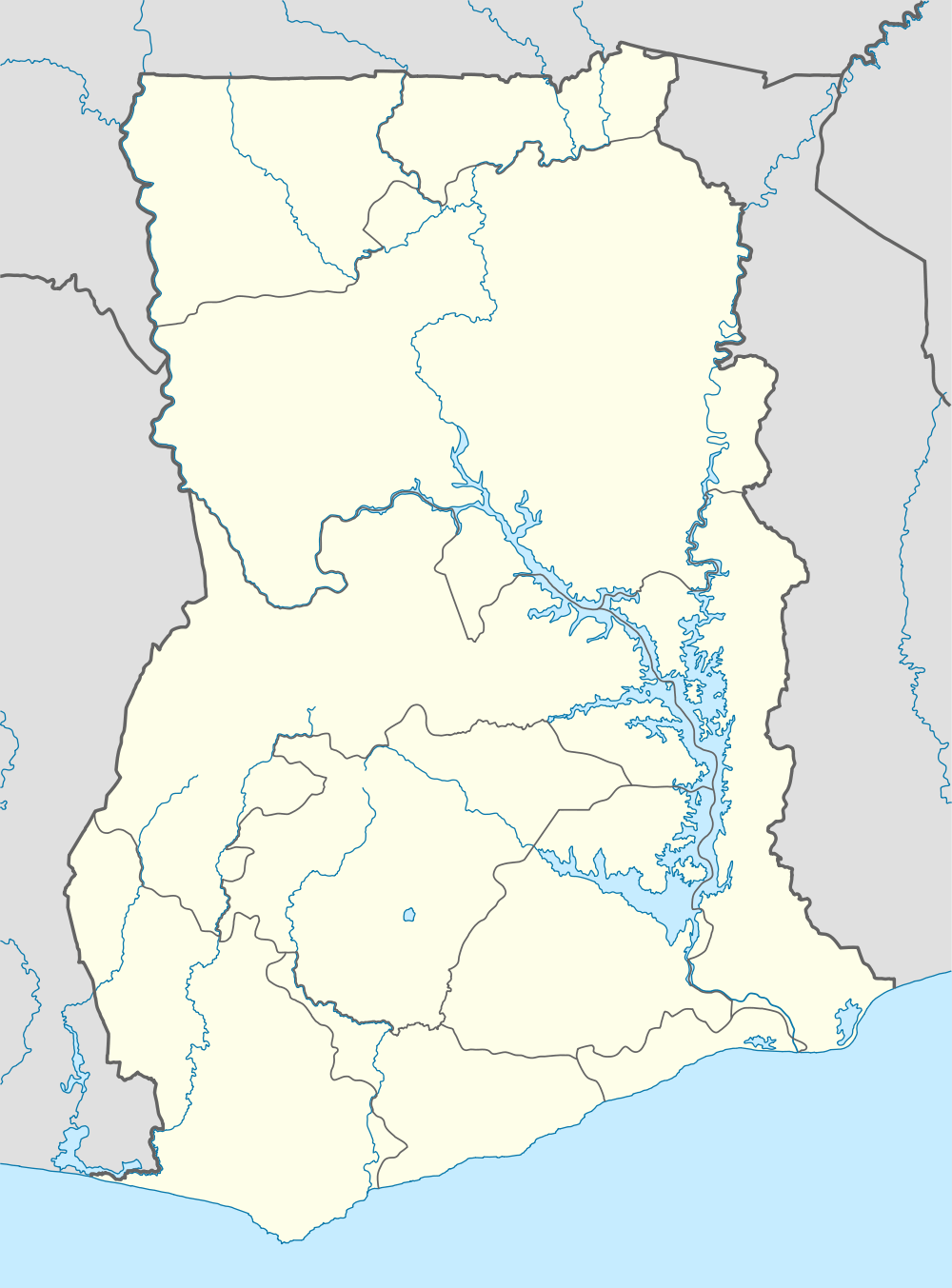Anomabu
| Anomabu | |
|---|---|
| Town | |
|
Fort William in Anomabu | |
 Anomabu Location of Anomabu in Central Region in Ghana | |
| Coordinates: 5°10′N 1°7′W / 5.167°N 1.117°WCoordinates: 5°10′N 1°7′W / 5.167°N 1.117°W | |
| Country |
|
| Region |
|
| District | Mfantsiman Municipal |
| Population (2013) | |
| • Total | 14,389[1] |
| Time zone | GMT |
| • Summer (DST) | GMT (UTC) |
Anomabu (also known as Anomabo and Annamaboe), is a town on the coast of the Mfantsiman Municipal District of the Central Region of Ghana. Anomabu has a settlement population of 14,389 people.[1]
European colonization
Anomabu became the focus of intense European trade rivalry in the 17th and 18th centuries, partly because of its easy access to a rich hinterland and partly because the local Anomabu were themselves powerful and astute traders. From the middle of the 17th century, European companies vied with each other in the quest for rights to establish and maintain a trading post at Anomabu. The earliest lodge, built in 1640 by the Dutch using earthworks, changed hands four times—from the Dutch to Swedes, then to the Danes, back to the Dutch and finally to the British.
In 1674, the British built a small fort using more durable materials and called it Fort Charles, after the reigning monarch King Charles II. However, it was abandoned in order to concentrate efforts and costs on Fort Carolusburg at Cape Coast.
In 1698, the Royal African Company "licensed" ship captains not in its employment upon the payment of a 10% "affiliation fee" to enable them to trade in its areas of monopoly. There followed a flood of "Ten Percenters" trading at British forts, often outnumbering the company's own ships. Anomabu became a popular haunt of "ten percenters", (until their licensing was stopped in 1712), exporting vast numbers of slaves.
The Dutch director-general at Elmina, Engelgraaf Roberts, quoting an English captain on Anomabu slave trade exports stated in 1717: "From January 1702 to August 1708 they took to Barbados and Jamaica a total of not less than 30,14 slaves and in this figure are not include transactions made for other ships sailing to such Islands as Nevis, Montserrat, St. Christopher, for the South Sea Company, the New Netherlands and others which would increase the above number considerably, and of which Annemaboe alone could provide about one third."[2]
Fort William

Anomabu Castle now known as Fort William, was designed by British engineer John Apperley who arrived on the coast in 1753 and constructed by 1760. After his death in 1756, Irishman Richard Brew took over the Governorship of the fort and continued its construction.
The Dutch began construction on Anomabo’s first lodge in 1639 or 1640 (not pictured). After the arrival of the Dutch Commander, Arent Jacobsz van der Graeff (1557-1642), the lodge was soon completed under his supervision. Ten or twelve years later the Swedes captured it. Danish forces took the lodge in 1657 under Caerloff, and the Dutch recaptured it in 1660. When the second Dutch-Anglo war ended in 1667 with the Treaty of Breda, the British gained a foothold in Anomabo. They began building Fort Charles by 1672 or 1673 (on the present-day location of Fort William). An early Anomabo chief, perhaps Eno or Eno Besi, inhabited the Dutch lodge at this time and declared it his palace.[3]
The Anomabu fort became the center of British slave trading along the Gold Coast until the slave trade was outlawed in 1807.[4]
Tourism
In modern times, Anomabu is a popular tourist destination. The remains of Fort William can still be seen.[5]
Notable residents
References
- ↑ 1.0 1.1 "World Gazetteer online". World-gazetteer.com.
- ↑ Ghana tourism site
- ↑ Courtnay Micots, “African Coastal Elite Architecture: Cultural Authentication during the Colonial Period in Anomabo, Ghana” (Ph.D. diss., University of Florida, 2010), 137, 390-393.)
- ↑ St. Clair, William. (2006). The Grand Slave Emporium: Cape Coast Castle and the British Slave Trade. Profile Books. "Chapter 7: The Fort," pp. 183–201. (Chapter on the Anomabu fort in a book about the nearby Cape Coast Castle.)
- ↑ Ghana Slave Forts
![]() Media related to Anomabu at Wikimedia Commons
Media related to Anomabu at Wikimedia Commons
| ||||||||||||||||||||||||||||||||||||||||||||
